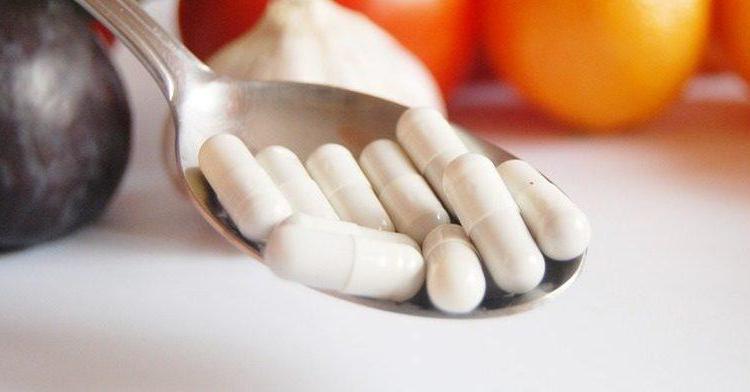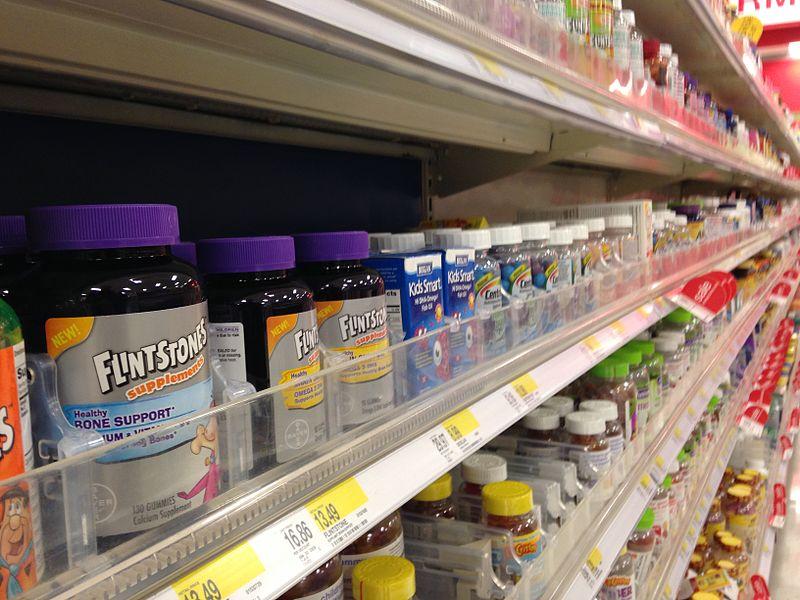Here’s Exactly What You Need To Look For In A Multivitamin

Pixabay
Attempting to pick out a new multivitamin is enough to send anyone into a fit of anxiety. The pharmacy aisle presents well over a dozen options, and reading all of the different labels to compare each product is quite a daunting task.
Plus, most people don’t even know what they’re looking for. What nutrients should I prioritize? Why are some vitamins included at 250 percent of my daily needs when others barely reach the 10 percent mark? Please. Send. Help.
Don’t worry, we’re about to make your multivitamin shopping experience as simple as possible.

Wikimedia
First things first…
Ask yourself if you really need to be taking a multivitamin in the first place. Conduct a little self-assessment of your daily eating habits. Do you consume a rainbow of fruits and veggies from sunrise to sunset? Can you easily recall your go-to lean protein sources and favorite fortified snacks? If yes, it’s likely that you’re getting the nourishment your body needs from food itself, and popping a pill every morning to supplement your diet might be overkill.
On the other hand, if you struggle with food allergies or work with a limited diet (whether due to medical conditions or lifestyle choices), multivitamin use isn’t such a bad idea.
Focus on the following ingredients:
Calcium with vitamin D: Calcium is the key to maintaining healthy bones and avoiding osteoporosis, which impacts far too many aging women. And calcium can be tricky because the body doesn’t always love absorbing it unless it’s paired with its good friend, vitamin D. Plus, it won’t hurt to add a little vitamin D boost during the times of year when your lifestyle lacks sun exposure.
Folic acid: Here’s another crucial one for the ladies. Folic acid is necessary for preventing neural tube defects (like spina bifida) in babies. And while you need more of it when pregnant, you need to be meeting the 400 micrograms daily target before conception so your body can properly nourish the fetus from day one.
Iron: While you should try to get a fair amount of your daily iron from the foods you eat, a modest supplement can be a healthy safeguard against anemia. Iron is critical in helping your red blood cells function properly and carry oxygen throughout your body.
Potassium: Potassium deficiencies are common not because of poor diets, but because of the way diuretic medicines interact with the nutrient in our bodies. So it doesn’t hurt to add a little extra on top of what you consume through your food every day since the body will flush out what it doesn’t use.

Pixabay
And don’t overdo it with these guys:
Vitamin A (and beta carotene): You’re better off focusing on getting this one from foods like carrots, sweet potatoes and bell peppers. Vitamin A is a fat-soluble vitamin, meaning that the excess you consume can be stored within the fat cells of your body rather than eliminated, and too much can reach a toxic level.
Vitamin C: Unlike vitamin A, this one is water soluble, meaning your body ditches what it doesn’t use throughout the day. However, there are so many amazing sources of vitamin C available in common foods we eat (like kale and citrus fruits) that supplementation here really isn’t necessary. Plus, consistently high doses can increase your risk of developing kidney stones.
Vitamins B6 and B12: Vitamin deficiencies are incredibly rare since these energy-boosting nutrients are easy to acquire from a balanced diet. And there is potential harm in overdoing it with this kind of supplementation over an extended period of time, including severe nerve damage.
Vitamin E: This nutrient, which plays a major role in keeping our skin and immune systems healthy, is best absorbed from food rather than a pill. Overdoing it with Vitamin E has been linked to both bleeding in the brain and a higher overall risk of death.
Make sure you understand how to navigate the “Percent Daily Value” measurements.
You’ll probably notice that the majority of vitamins and minerals in these supplements have their amounts listed in either milligrams, micrograms or international units. So the “Percent Daily Value” makes life easier by placing each nutrient on the same measuring scale. And it does exactly what it sounds like — it calculates how much of your daily dietary need is being met by this supplement.
However, not all bodies are created equal, so 100 percent of your daily need might not be the same as someone else’s 100 percent, especially if deficiencies or pre-existing medical conditions are at play. So watch this measurement, but also take it with a grain of salt.
It’s most important to recognize which nutrients are supplied over the 100 percent DV mark because the body can’t actually use more than these values and some vitamins and minerals do reach toxic levels when consumed in these quantities over time.
And if an included nutrient is well below the 100 percent DV mark, that’s not necessarily something to fret about. For example, if a multivitamin actually had 100 percent DV of calcium and magnesium, it would be far too large a pill to swallow. If you want more of the small-dosed vitamins and minerals, you’re better off looking into those individual supplements rather than a multivitamin.

Pexels
And remember…
Multivitamins are supplements to the nourishment you already derive from your food! So eating a solid diet and taking a daily multivitamin could actually make you sick as opposed to completing your nutritional profile. Don’t forget to factor in the goodies of your diet when looking at supplement labels and evaluating how much extra you actually need.
And just a quick disclaimer: this advice pertains to the average adult with a relatively clean and normal bill of health. If you’re deficient in certain vitamins or minerals, or have a condition that impacts your body’s ability to absorb and retain nutrients, your multivitamin questions are better suited for your physician.











